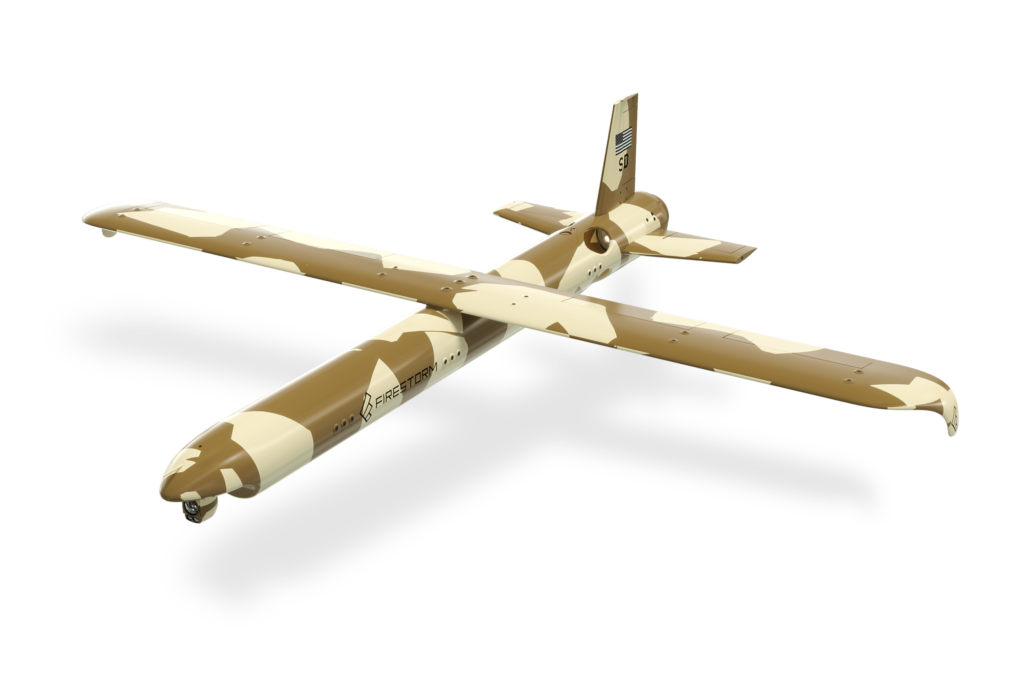Firestorm Gets $12.5M from Lockheed and Others to Automate Drone Production with 3D Printing
Firestorm Labs is advancing an initiative that has been a topic of discussion on our site for a while: automating drone swarm production. Drones are increasingly altering the landscape of warfare worldwide, capable of delivering ordnance or capturing images from continents away or just beyond the next rise. One of the quickest methods to produce drones is through 3D printing, which allows for local manufacturing, weight reduction, component integration, and shape optimization. To automate drone production, Firestorm has secured $12.5 million in funding from a range of investors, including Lockheed Martin, Silent Ventures, 645 Ventures, BVVC, Decisive Point, Overmatch, Marquee Ventures, IronGate, Cubit Capital, Backswing Ventures, The Veteran Fund, Feld Ventures, Beyond Capital, and RedCat. This diverse group of venture funds underscores the significant interest in advancing drone technology.
“Firestorm is excited to announce this latest round of funding that will propel the company forward to shape the rapidly evolving needs of a UAS-dominated battlefield and a defense industrial base ripe for revolutionary manufacturing models. Our investors understand the pressing need for delivering technologies quickly and with the interoperability that today’s warfighters demand, and we are thrilled to welcome Lockheed Martin Ventures partnership in this mission,” said Firestorm CEO Dan Magy.
“We are a new approach to an emerging global challenge. There is a clear need within the defense technology sector to build faster and less costly systems, and simply throwing money at the issue won’t change the outcome. We found that coalescing a deep operational understanding of warfighter needs, combined with aerospace pragmatism, and a new rapid manufacturing model, allows us to stand out in a very crowded market. The goal is to create a completely new category that shakes up legacy timelines and cost,” said Chief Strategy Officer Chad McCoy.
Firestorm is aiming to create an xCell production line housed within a shipping container, enabling the manufacturing of airframes close to where they are needed. The company has also revealed that it has secured Department of Defense contracts for its Unmanned Aerial Systems (UAS) and the xCell, suggesting that manuals for these systems may be currently in development, potentially in Ukrainian. Firestorm has designed a drone named the Tempest, noted for its reassuring simplicity and slender form. The company aims to print much of the system within a mere nine hours, which is remarkably quick.
The design will be modular to accommodate new payloads and various configurations, enhancing versatility. The company also plans to implement snap-fit components, which will facilitate quicker assembly and modifications. Additionally, Firestorm intends to introduce swappable engines to the design, which could significantly expedite maintenance processes and increase operational time for the craft.
The intended payloads are relatively light, weighing around 4.5 kilograms, comparable to the weight of an M252 mortar shell. The aircraft will feature a wingspan of 210 centimeters and a length of 182 centimeters. Although this is just the initial model, the team aims to produce many more, all utilizing the OCTRA printed circuit board assembly (PCBA). Employing a standardized PCBA like OCTRA is strategic, as it is expected to streamline production and reduce supply chain complexity. OCTRA is designed to serve not only as the flight computer but also as a platform for third-party integrations, further enhancing the craft’s adaptability and functionality.
The team aims to produce the drones locally using their xCell unit, which appears to offer significant benefits that could indeed please entities like HP. The xCell is designed to operate off-grid, enabling rapid and widespread production of Firestorm drones. The company’s goal is to maintain affordability while achieving large-scale production, which could position this technology as pivotal in warfare.
The adaptability of this production model is a crucial advantage. If the drones can be updated, improved, and adapted swiftly, they can significantly outperform an adversary using static technology throughout a conflict. For example, adjusting the drones’ wingspans for higher altitude usage, enhancing maneuverability for tighter turns, or increasing payload capacity are modifications that could be rapidly implemented based on evolving needs.
Furthermore, in scenarios where drones are frequently lost to enemy action, the ability to produce them quickly and locally offers substantial strategic benefits. This adaptability and rapid production capability could indeed be decisive in conflict situations, providing continuous and tailored support to meet the specific demands of the battlefield.
3D printing is going to war. In Ukraine, it seems like a plethora of drone projects are under way. UAS production is a lifeline for the country and may yet secure it a victory.
Subscribe to Our Email Newsletter
Stay up-to-date on all the latest news from the 3D printing industry and receive information and offers from third party vendors.
Print Services
Upload your 3D Models and get them printed quickly and efficiently.
You May Also Like
Printing Money Episode 28: Recent M&A and More with Joris Peels, 3DPrint.com
Welcome to Episode 28 of Printing Money. For this one Danny is joined by our own, Joris Peels (Executive Editor, 3DPrint.com). This crossover-pod is indeed quite meta-level but it’s not...
3DPOD 251: 3D Printing for Football Helmets with Kodiak Brush, LIGHT Helmets
Kodiak Brush grew up playing football before working on crash testing. Sometimes someone’s career can seem like it is inexorably building up to one goal. And with Kodiak now making...
3DPOD 250: Dieter Schwarze, Nikon SLM Solutions
Dieter Schwarze is a true 3D printing icon. Here we get the twisting, arduous tale of Dieter’s journey into additive. Starting with inkjet, SLA and lots of other technologies, Dieter´s...
3DPOD 249: One Million Part 3D Printing Orders and More with Spencer Loveless, Merit3D
Spencer Loveless’ story is a compelling one. It’s a tale of a family business starting from nowhere and becoming successful. Then subsequently, it is a tale of manufacturing in the...































